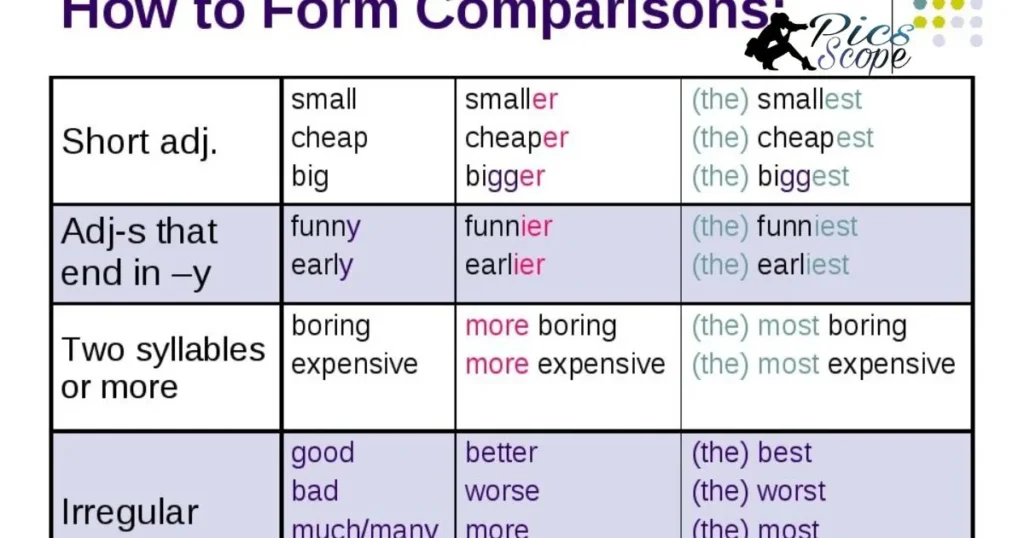Digital photography is the art and science of creating durable images by recording light with an electronic image sensor rather than photographic film. Unlike film cameras, digital cameras use an electronic photo sensor to convert light into electrical charges. The key distinction is that with digital photography you can instantly view, edit and share photos using electronic devices.
What distinguishes digital photography from traditional photography?” Digital photography revolutionized image capture through instant previewing, easier photo sharing, and powerful editing. While traditional film photography relies solely on chemical processes to produce prints, digital photography offers unparalleled convenience through electronic manipulation and distribution of images.
The emergence of digital photography in the late 0th century transformed photographic practice. Unlike traditional film photography which uses light-sensitive chemical emulsions on plastic film to create exposures, digital photography relies on an electronic image sensor to record images as data.
This allows for instant reviewing, editing and sharing of photos without the delay and expense of film development. The ease and flexibility of digital has made photography more accessible, though some argue film still offers superior image quality.
What are the fundamental differences between digital and film photography?
Digital photography uses a digital sensor to capture and record images, while film photography relies on light-sensitive photographic film. The digital sensor converts light into electrical signals to form the image, which is stored digitally, while the film undergoes a chemical process when exposed to light that captures a latent image.
The two mediums produce the end photograph through very different processes – one digitally manipulating pixel information, the other using chemical reactions within the film plus subsequent chemical processing. This leads to differences in resolution potential, image quality characteristics, editing flexibility, cost, accessibility, and more.
How does a digital camera capture an image versus film?
A digital camera uses a sensor chip made up of millions of light-sensitive photodiodes that convert photons into electrons to form the image. The amount of light hitting each photodiode determines the strength of the electrical signal – this analog data gets converted into digital information forming the image pixel by pixel.
Film relies on a chemical emulsion on its surface that undergoes a reaction when exposed to light. The light interacts with the silver halide crystals in the emulsion to form a latent image through this chemical process – the film then needs wet chemical processing to develop and fix this image into a viewable photograph.
What role do pixels play in digital photography?
Pixels are the building blocks of digital photographs – the more pixels, the more potential image information can be captured. The number of megapixels a digital camera sensor has determines resolution capability – more megapixels provide more detail, especially for enlarging images.
Pixel count alone doesn’t determine image quality – factors like sensor size, image processing, lens quality also play a major role. So while pixels define image information limits, a camera with less but larger or higher quality pixels can outperform models with simply more total pixels.
What gives film its distinctive visual characteristics?
The chemical makeup and light-sensitive silver halide crystals in film emulsions give analog photographs their unique visual signature. The physical grain structure along with the levels and character of color dyes created make film images feel more textured and organic versus digital.
The tones and contrast of film can be rendered uniquely based on development techniques and chemical processing – push and pull processing as well as cross-processing all create distinctive looks. So film has an innate characteristic curve and palette that many feel captures natural tonality better than digital cameras and sensors.
How does editing and processing differ between the two mediums?
Film
- Film has an inherent look and character based on the type/brand used. Many film photographers aim to preserve the “authentic” look of the film they chose.
- Editing options are more limited compared to digital. Common edits bring back details lost in development/scanning or enhance the existing film look.
- Significant manipulation seen as going against the purpose of shooting film. Goal is to leverage the unique attributes of film.
Digital
- Much wider range of editing options in post-processing software like Lightroom. More freedom to alter the look.
- Manipulation and editing seen as part of the creative process. The final image reflects the photographer’s vision.
- Scanning film to digitize introduces a hybrid approach – merging film and digital. Allows film’s look then further editing.
Editing film photos tends to focus on respecting the medium and bringing out the qualities of the film itself. Digital editing gives more creative freedom in post to achieve the desired vision for the image. The line between what constitutes too much manipulation is viewed differently between the mediums.
What controls and effects are available when editing digital photographs?

Digital photo editing software like Adobe Lightroom and Photoshop provide extensive controls to manipulate images. You can adjust basics like exposure, contrast, white balance, shadows and highlights. More advanced editing options exist too – saturation, clarity, vibrance, and targeted adjustment brushes.
Beyond corrections, creative effects are available like black & white conversions, split toning, vignettes, film grain filters and presets that alter the look and feel. The possibilities are vast compared to film. Tools allow you to overcome issues that may have occurred when capturing the photo and transform the image into your desired vision.
With film, editing options come from what you can do in a darkroom. Adjustments made during printing and developing affect contrast, brightness and color cast. Dodging and burning can control exposure in targeted areas.
Techniques like multiple exposures create artistic effects. But the inherent look of the film itself largely remains, rather than introducing extensive digital alterations. Film editing works with the medium rather than against it.
What techniques are used to develop film photographs?
Developing black and white film requires chemical processing. Film is submerged into different baths – first the developer, then a stop bath, followed by the fixer. These stages make the latent image visible.
Adjusting the developer dilution, temperature and time spent in each bath impacts contrast and overall tone of the final print. Push processing is done by extending development time to enhance exposures. Color film requires the additional step of removing silver halides so dyes form in their place during processing.
Printing in a darkroom allows further refinement of the look. Exposure time on the enlarger, choice of photo paper, and use of filters/contrast controls affect the final print. Dodging and burning – selectively reducing or increasing exposure – is used to control contrast in specific areas.
Can similar looks be achieved with digital editing versus film processing?
The different inherent qualities of film versus digital sensors mean the starting point differs. But the availability of film grain filters, presets, and advanced editing controls in software like Lightroom means film looks can often be emulated with a digital file.
Black and white conversions, split toning, and careful adjustment of tone curves help achieve a classic film feel. Likewise, scanning developed film and then digitally editing creates a hybrid approach. The initial film look is preserved, then further enhanced with software for brightness, contrast etc.
The combined workflow merges the advantages both mediums offer. A film aesthetic might appeal over straight digital, while software corrections handle issues like dust spots. It’s popular for photographers to shoot on film, have it processed, then scan negatives for additional flexibility.
In the end, similar looks can result from both formats with enough practice. But an experienced eye can still detect the inherent distinctions. The question is which process – physical or digital – offers the experience the photographer most connects with.
What are the practical advantages of digital photography?
Digital photography offers many practical benefits compared to film photography. The most significant is instant image review – you can immediately view photos on the camera screen and retake them if needed. Digital cameras also store thousands of images on small memory cards, eliminating the need to buy and store film.
Images can be transferred seamlessly to computers for editing, sharing and printing only your best shots. Digital cameras allow easy deletion of unwanted images and often have built-in filters and other creative options. Overall, digital photography brings great convenience and flexibility.
How has digital made photography faster and less expensive?
Digital photography is much faster and more affordable than film. There is no need to buy film or pay for costly film development – just snap unlimited photos and delete those you don’t want. This saves significant time and money.
Digital images can be instantly reviewed, edited if needed, and shared online in minutes after shooting. Film required careful shot consideration to avoid wasting exposures, then waiting days or weeks to get prints back from the lab. Now anyone with a digital camera can freely experiment photographically and see results immediately without ongoing expenses.
How has digital revolutionized photo sharing and distribution?
Digital photography has enabled revolutionary new ways of sharing images that were impossible with film. Photos can be emailed, posted on social media or blogs, and shared via apps moments after shooting.
Image distribution is instant, global, and essentially free. Digital files allow new options like photo books, canvas prints, phone cases and more that film could not offer. Images can be perfectly duplicated an infinite number of times digitally. Sharing special moments with faraway loved ones is also far easier digitally. Overall, barriers to image distribution have vanished in the digital photography age.
What convenience factors made digital the new default?
Several key convenience factors have made digital photography the new normal. Digital cameras are lighter, faster, offer image previews, have no recurring film costs, allow easy deletion of unwanted shots, and enable instant sharing online.
Images can be edited non-destructively on computers and creative options like filters applied. Storage needs are minimized with small memory cards replacing shelves of photo albums. And there is no need to rely on photo labs. The sheer speed, flexibility, affordability and distribution potential made digital the obvious choice for most photography needs.
What gives film photography its enduring appeal?
Film photography has an enduring appeal due to its nostalgic and vintage aesthetic. The grainy and imperfect quality of film images evokes feelings of nostalgia, especially for older generations who grew up with film. Younger generations are also drawn to the retro style.
Film also requires more skill and effort on the part of the photographer compared to digital, giving it an artisanal appeal. The process of manually loading film, being limited in the number of shots, and waiting for images to be developed adds suspense and meaning to each photo taken.
Film photography also creates tangible photographic objects – the prints and negatives themselves. This physicality, being able to hold and display prints, makes film appealing compared to only having images stored digitally.
Collecting and displaying film prints has an enduring appeal similar to other physical art objects like paintings or records. The uniqueness of each film image, with its natural grain and flaws, also makes the prints more valued as photographic art objects.
What aesthetic qualities make film images unique?
Film images have a distinctive aesthetic compared to digital due to the natural grain and flaws that are part of the medium. Each film image has a unique grain structure and flaws that give it a one-of-a-kind organic look. This creates striking light leaks, unexpected colors, blurring, and other imperfections not seen in clean digital images.
Film can also capture a wide dynamic range, tonality, and vibrant colors that set it apart from early digital photography. Certain film stocks are also associated with iconic looks, like the saturated colors of Kodachrome or the stark contrasts of black-and-white cinema film.
Using these films is appealing to emulate the aesthetics of classic photography from their eras. Film images have a widely flexible aesthetic – grainy like an old newspaper photo, cinematic as a film noir movie still, or as vivid as a 60s magazine cover. This versatility and legacy of iconic film stocks give film an enduring aesthetic quality.
Why does film lend itself better to black-and-white photography?
Film lends itself well to black-and-white photography because of the high contrast and tonality of monochromatic film images. The grain inherent in film captures a wide range of mid-tones, shadows, and highlights in black-and-white, creating striking high-contrast images.
The grain adds texture and detail that suits the starkness of black-and-white over color. Flaws like light leaks also take on a new boldness and style without color to detract from them.
Black-and-white film photography also has rich history and associations with iconic photographic styles, like dramatic war photojournalism or studio portraits from the early 0th century.
Using black-and-white film pays homage to masters like Ansel Adams or Henri Cartier-Bresson, giving modern film photographers a satisfying connection to the past. Film renders light and shadows starkly without color to distract the eye, which suits black-and-white photography’s emphasis on shape, contrast, and tone.
What makes film feel less sterile and more organic to some
Film photography feels organic and less sterile than digital because of its imperfections and tactile nature. The natural grain and flaws, like light leaks, make each film image completely unique rather than the clinical perfection of digital. This gives a sense of life and variety to film, where each photo takes on its own personality.
The flaws make images feel more authentic and spontaneous, like capturing a real moment in time rather than a artificial digital creation. The process of film also adds to this organic feeling: winding the film, hearing it whir inside the camera, manually focusing the lens. Film must be handled, transported, and developed using chemicals and darkroom processes that digital lacks.
This hands-on craft, similar to other organic art like pottery, leaves room for the artist’s influence. There is satisfaction in creating something physical through skill rather than just computer processing. Holding the developed film strips or prints provides a fulfilling tangible interaction that digital images on screens can feel sterile without.
How do resolution and image quality compare?

Higher resolution cameras can capture more detail, but they require more precise technique to get sharp images without motion blur or focus issues. As the sources explain, higher megapixel sensors have smaller pixels that are more easily blurred by camera shake or missed focus.
Can film capture finer grain and detail than most digital cameras?
Yes, medium and large format film is estimated to have detail equivalent to digital cameras with over 100 megapixels of resolution. Even 35mm film can match or exceed the level of detail of most mainstream digital cameras.
How do lens quality and full frame size impact sharpness?
Higher quality lenses with superior resolving power will allow sensors to capture finer detail. And larger full frame sized sensors avoid cropping of the image circle, allowing more of the detail from quality lenses to be recorded.
So both factors impact potential sharpness along with sensor resolution. But technical handling, motion control, and focus precision ultimately determine if that potential sharpness is realized.
When does higher megapixel count not tell the whole story?
While more megapixels allow capture of finer detail, the sources explain high resolution only translates to superior real-world image quality when paired with precise technique and handling. Without proper stability, focus, and lighting control, lower resolution cameras can deliver sharper looking results.
FAQ’s
What is the main component used to capture images?
Digital uses an electronic sensor, film uses light sensitive photographic material.
How are the images processed and viewed?
Digital images can be instantly viewed, edited, and shared on cameras or computers – film must be chemically processed before viewing prints.
What provides the grainy, textured look in images?
Film grain comes from the photographic emulsion while digital can mimic this look through editing.
Are there ongoing costs after initial gear purchase?
Digital has the cost of buying memory cards while shooting film requires purchasing rolls and paying for development.
Which allows more post-processing manipulation?
Digital photos have more extensive editing options with software like Photoshop vs more limited adjustments possible with film in the darkroom.
Conclusion
Digital photography has transformed how images are captured and processed compared to traditional film photography. Digital cameras utilize electronic sensors and software to produce photos instantly viewable on screens.
Images can be freely manipulated with editing tools before sharing. In contrast, traditional film photography relies on light-sensitive material embedded onto rolls of celluloid film. Physical development and printing is required initially to view negatives, involving chemical processing.
The tangible nature of film and more artisanal approach attracts dedicated enthusiasts, despite digital dominance. While both formats have distinct advantages, their coexistence showcases photography’s ongoing evolution alongside technology.







